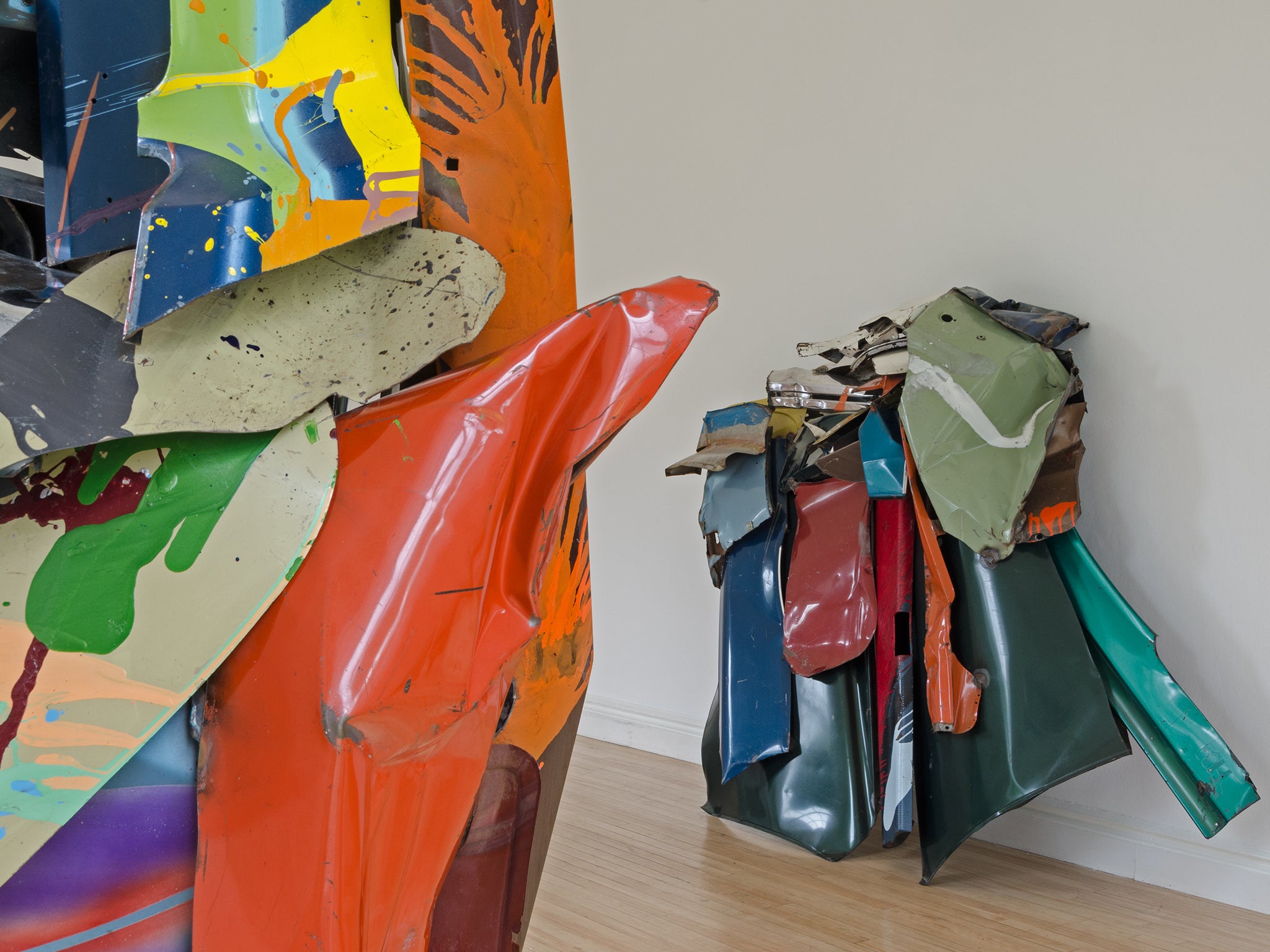John Chamberlain, Inverleith House, review: The man who mashed bangers to great effect
Chamberlain is an artist’s artist, clearly influential on contemporaries who take materials to transform into unrecognisable new constructions

American artist John Chamberlain’s triumphant show in Edinburgh, his first at a UK public gallery, casts a new light on a man most famous for his mashed, twisted and mangled sculptures made of car parts. Inverleith House’s Exhibition Director Paul Nesbitt has managed to assemble a range of works, many not seen for almost 30 years, which display this important career in a tightly curated mini retrospective.
Chamberlain was born in 1927 in Indiana and, after studying in Chicago, moved to New York in 1956. He became a key figure of the vibrant post-war New York art scene, a sculptor who eschewed the abstract expressionist love of paint and canvas to embrace materials including car parts. He said presciently, “Kline gave me the structure, De Kooning gave me the colour.”
Gondola Walt Whitman (1981-82) is one from a series that he dedicated to his favourite poets. Set on the floor it is clearly parts of a car formed into the prow of a boat but the beauty in the surface shows a painterly sensibility despite Chamberlain’s chosen materials.
There are pieces in this exhibition borrowed from the DIA Art Foundation, some never shown to the public before. These series of small works embrace materials as diverse as coffee cans, urethane foam and paper bags. This whole exhibition makes the viewer consider a memorable quote by Chamberlain – “there should be one place where your act of discovery is still alive and I think that place is art.” Most surprising to me perhaps is the lovely Luna, Luna, Luna (1970) made of coated polymer resin. It captures and reflects the light in the best West Coast “light and space” manner of his friend Californian artist Larry Bell.
There are also the tiny maquettes Chamberlain made when, being too old to weld metal, he started to make small studies of coloured aluminum foil, compressing it into knots and tree-like forms. These touching studies carry the imprint of the hand of the artist and, when scaled-up, show the exuberance of a man who enjoyed both colours and materials.
Inverleith House is one of my favourite places to see art, with its lofty ceilings and views of extravagant gardens where some of the scaled works made a year before the artist’s death in 2011 are carefully placed. This includes Ritzfrolic (2010), a life-enhancing, kelly green and shimmering monumental knot. It frames a view of Edinburgh, while the fuchsia pink of Fiddlers Fortune is reflected by nearby flowering bushes.
Chamberlain is well known in America, with a recent retrospective at the Guggenheim, but less famous here. He is an artist’s artist, clearly influential on contemporary artists who take materials where they can find them, to transform into unrecognisable and new constructions. Discovering Wishingwellwink amidst the hydrangeas may well be one of the great pleasures of a Scottish summer.
John Chamberlain continues at Inverleith House, the Royal Botanic Garden, Edinburgh, until 4 October
Join our commenting forum
Join thought-provoking conversations, follow other Independent readers and see their replies
Comments